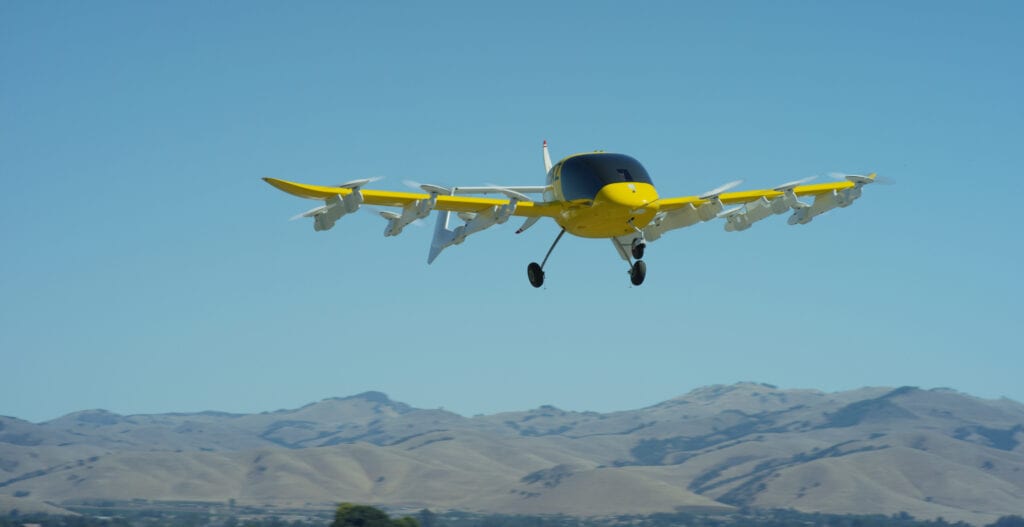
Urban Air Mobility (UAM) all-electric autonomous air taxi creator, Wisk, is partnering with the National Aeronautics and Space Administration (NASA) to create safe solutions for autonomous air vehicle integration into the national airspace. (Wisk)
The aviation industry will be driven by three factors in the coming years: a global market, sustainability, and transformative technologies, James Kenyon, director of the advanced air vehicles program at the National Aeronautics and Space Administration (NASA), said during a Feb. 9 webinar.
“Within aeronautics, we really organize ourselves and execute under a strategic implementation plan that recognizes what we would call three big mega drivers and, and those mega drivers kind of define where the market is going, what’s going on in the world, and the kinds of things that we need to be responsive to,” Kenyon said.
Kenyon said the global market is not only a driver because of where planes are flying but also because of where companies, manufacturers, and supply chains are located.
It is widely recognized that the sustainability of the aviation industry is going to be a major driver in the years to come, however, most people think of sustainability in terms of the environment and climate change, Kenyon said.
“When you look at sustainability, I know for me when I hear the word sustainability and I think like a lot of people, of the environment and climate change,” Kenyon said. “I think of air quality, water quality, and those things that really make the earth livable for all of us and that is a huge part of sustainability, but it is not the only part of sustainability. If we’re going to do things in the market, they also have to be sustainable from an economic standpoint.”
Transformative technologies will also be drivers of the industry, Kenyon said. These technologies will be very fast-moving and markets will have to contend with how to integrate them and how to do it quickly.
Recognizing those key drivers allows NASA to focus research into strategic areas like safe and efficient growth in global operations; innovation in commercial supersonic aircraft; ultra-efficient subsonic transports; safe, quiet, and affordable vertical lift aircraft; in-time system-wide safety assurance; and autonomy.
One example of this research is NASA’s Airspace Technology Demonstrations (ATD-2) Integrated Arrive/Departure/Surface concept of operations which reduces energy use through more efficient operations.

Demonstrations at Charlotte Douglas International Airport from Sep. 2017 to Sept. 2020 show a savings of 803,227 gals of fuel, over 16 million lbs of CO2, and 4,136 hours of engine run time. (screenshot from Kenyon’s presentation)
“We recently completed a technology and airspace technology demonstration that looked at reducing energy to more efficient operations,” Kenyon said. “And as an example, we deployed it at Charlotte for a limited number of what they call banks, which are kind of periods where there are a number of takeoffs and landings.”
Demonstrations at Charlotte Douglas International Airport from Sep. 2017 to Sept. 2020 show a savings of 803,227 gals of fuel, over 16 million lbs of CO2, and 4,136 hours of engine run time.
Kenyon said NASA is looking at transonic truss-braced wings, small core gas turbines, electrified propulsion, and high rate composite manufacturing to make subsonic technologies more sustainable.
“We were launching a new program this year focused on dramatically increasing the manufacturing rates for aircraft composites, large aircraft, structural composites,” Kenyon said.